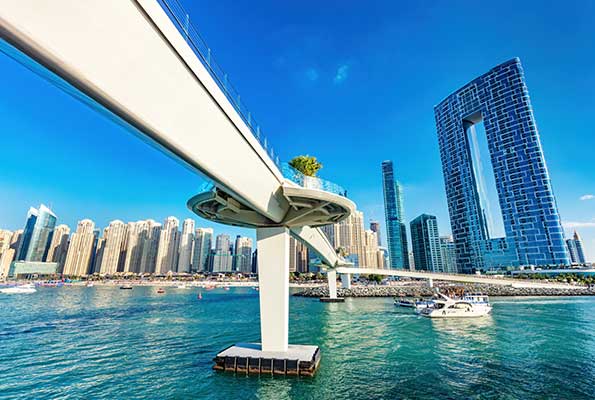According to S&P, the non-oil sector, which is anticipated to gain from significant development in tourism, government initiatives, and technological advancements, will be the main driver of the UAE economy’s 3% growth in 2023 and 4% growth in 2024.
The credit rating agency’s analysts emphasized the UAE government’s thorough implementation of economic and social programs over the past few years in statements to the Emirates News Agency (WAM). These programs are tactically planned to pave the way for steady, long-term economic growth.
The booming tourist industry in the UAE is also expected to develop in the future, according to S&P analysts. The UAE’s ambitious aim to draw 40 million tourists by 2030, along with plans to increase the number of hotel rooms to 250,000 during the same period, depends heavily on the nation’s capacity to hold significant international events.
Analysts anticipate that the banking industry in the UAE will continue to be healthy, with profitability climbing above pre-pandemic levels as a result of rising interest rates. Furthermore, with steady home prices supported by high demand, the Dubai real estate market is anticipated to grow more adaptable.
According to Trevor Cullinan, a sovereign ratings analyst at S&P, the non-oil sector will be the main driver of the UAE economy’s 3% growth in 2023. He further stated that both the oil and non-oil industries are anticipated to contribute to the economy’s 4% growth in 2024. The major drivers of the nation’s economic expansion were emphasized by Cullinan, including oil and gas, wholesale commerce, industry, real estate, building, financial services, and tourism.
Expatriate and tourist inflows, as well as optimistic attitudes from investors, consumers, and the private sector, are expected to support the non-oil economy. This is part of the “We Are the Emirates 2031” vision, which seeks to progress the development process by increasing trade volume and the GDP share of tourism through collaboration between public and commercial entities.
Cullinan emphasized that, over the past several years, the UAE government has carried out a wide range of business and social measures that are anticipated to promote long-term economic growth. These initiatives include raising the UAE’s competitiveness in terms of ease of doing business, introducing new visas like the Golden Residence Visa, the Green Residence Visa, and multiple-entry tourist visas, which will attract more tourists, allowing 100% direct foreign ownership in more than 1,000 commercial and industrial activities, introducing an insolvency law to help people facing financial difficulties reorganize their debts and borrow again on favorable terms.
According to Cullinan, the UAE’s recent efforts to create a yield curve in the UAE dirham through the introduction of treasury bonds and other local currency-denominated instruments will result in the growth of local capital markets and increase the availability of financing for UAE businesses and banks.
Tatiana Lysenko, the lead economist for emerging markets at S&P, anticipated that the UAE’s economy would develop more as a result of the rise of the tourism industry. In 2022, the Emirate of Dubai was able to bring in 14.7 million foreign visitors, which was twice as many as in 2021.
This suggests that the number of visitors may reach its peak of 16.7 million in 2019 or 2023. Additionally, 4.1 million hotel visitors were attracted to the Emirate of Abu Dhabi in 2022, up 24% from 2021.
Leskova anticipates that the UAE’s tourist industry will keep expanding, helped along by the nation’s recurrent hosting of important events like COP28, the Conference of the Parties to the United Nations Framework Convention on Climate Change. By 2030, the UAE hopes to welcome 40 million guests and have 250,000 hotel rooms available. With this development, they should be able to accomplish both of these goals.
Lysenko further expected greater flexibility in the Dubai real estate market and a stabilization of home costs due to the city’s high demand, while adding that the rise in the quantity of new commercial licenses is another evidence of Dubai’s appeal to businesses.
The banking industry in the UAE is still strong, according to Mohamed Damak, senior director and global head of Islamic finance at S&P, and profitability is anticipated to increase and surpass pre-pandemic levels as a result of growing interest rates and technological developments. As a result of improved internal capital generation, favorable financing, and liquidity conditions, and a strong net external assets position, which will shield it from the pressures of declining global liquidity and rising costs, he also anticipates that the capitalization of the UAE banking system will continue to be strong.



